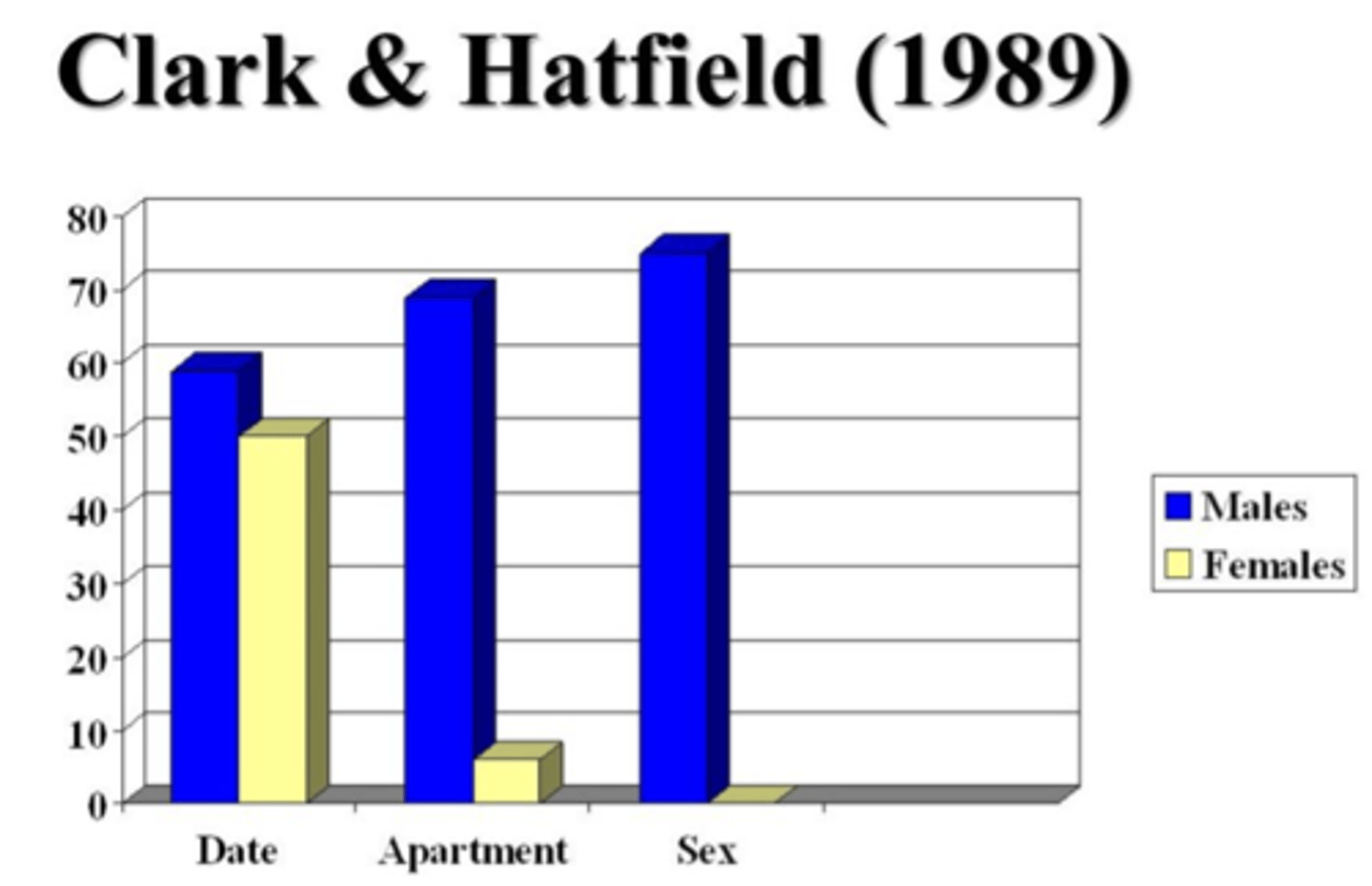RELS 10: Sexual selection A03
1/4
There's no tags or description
Looks like no tags are added yet.
Name | Mastery | Learn | Test | Matching | Spaced |
|---|
No study sessions yet.
5 Terms
Outline the procedure, key finding and conclusion of Clark & Hatfield's experiment on casual sex (5)
* Students approached by member of opposite sex
* Asked 'Would you go to bed with me?'
* 75% of males said 'yes'
* 0% of females said 'yes'
* Women are choosier than men about sexual partners

Explain how sexual selection can account for the difference between males and females found in Clark & Hatfield's experiment (3)
* Difference in willingness now reflects preferences that would have led to reproductive success in the EEA
* Casual sex for males increases chance of reproduction
* Casual sex for females leads to risk of pregnancy to partner with poor genes / weak investment in offspring
Outline the key methodological details, key findings and conclusion of Buss' 37 cultures study (5)
* Self- report / survey
* Cross- cultural study
* Females attracted to characteristics linked to resource provision, e.g., income and ambition (36/37 cultures)
* Males attracted to characteristics linked to reproductive capacity, e.g., looks and youth (37/37 cultures)
* Females seek resources, males seek attractiveness
Explain how sexual selection can account for the difference between males and females found in Buss' 37 cultures study (5)
* Difference in importance now reflects preferences that would have led to reproductive success in the EEA
* Females needed resources to care for offspring, so...
* ...attraction to protector / provider would have enhanced own / infants' survival if they mated with such males
* Male attraction to signs of youth, health, which are indicators of fertility...
* ... would have increased likelihood of reproducing if they mated with such females
Identify one way in which sexual selection theory can be criticised for being socially sensitive (1). Give some examples to illustrate the criticism (2).
* Reinforces stereotypes about men and women
* That women want / should want fewer sexual partners than men
* Reinforces sexual double standards: slut shaming
OR
* That men are / should be the main provider of resources
That women are / should be the main carer for children
* Reinforces stereotypes about 'real' men and women